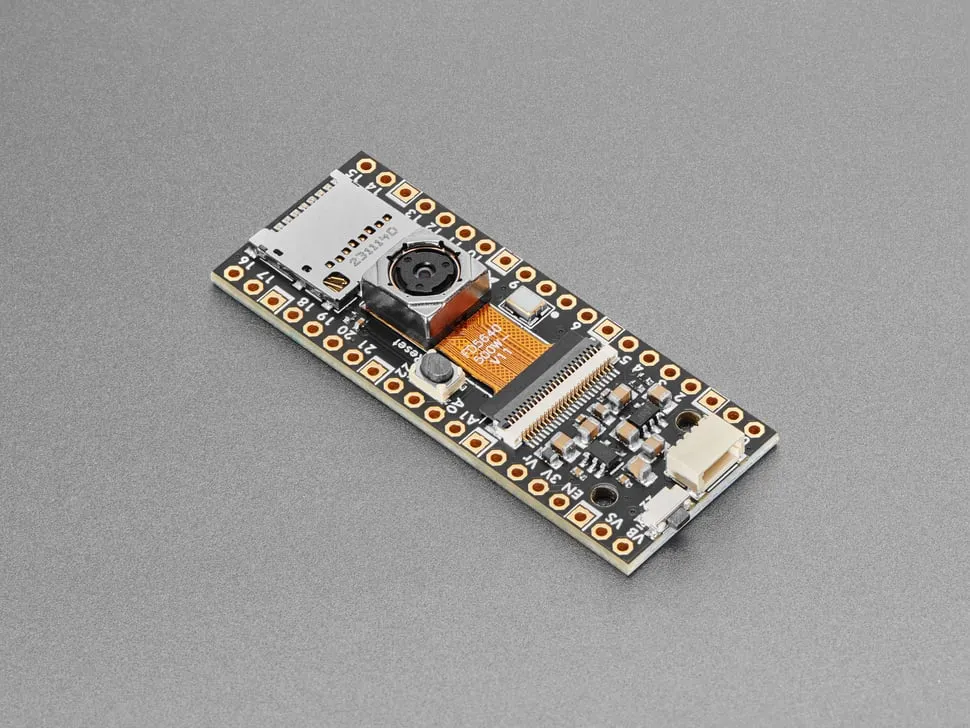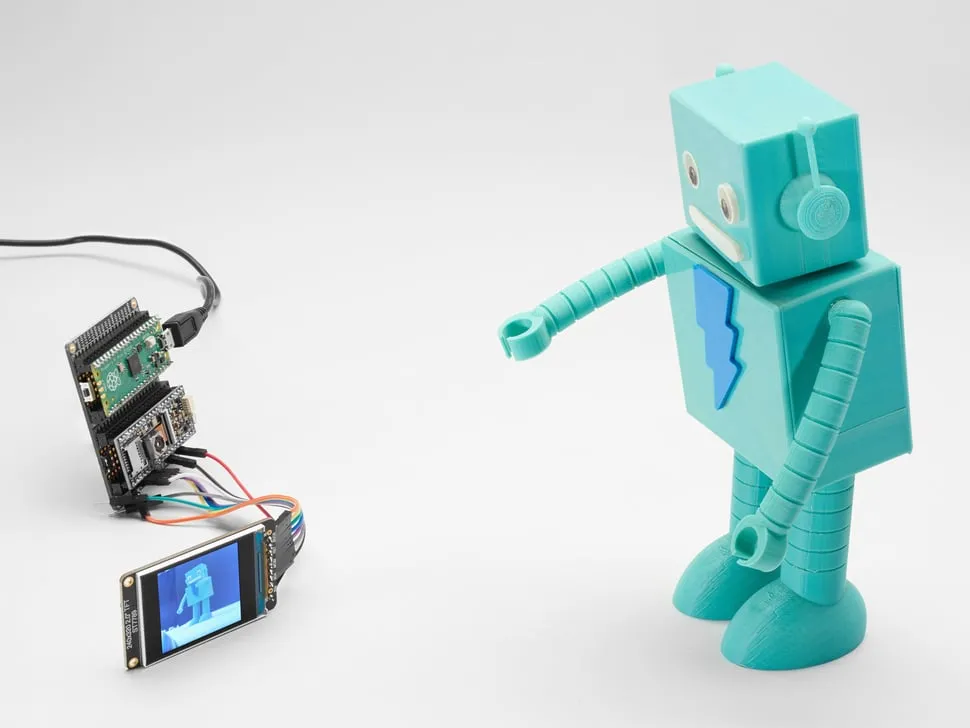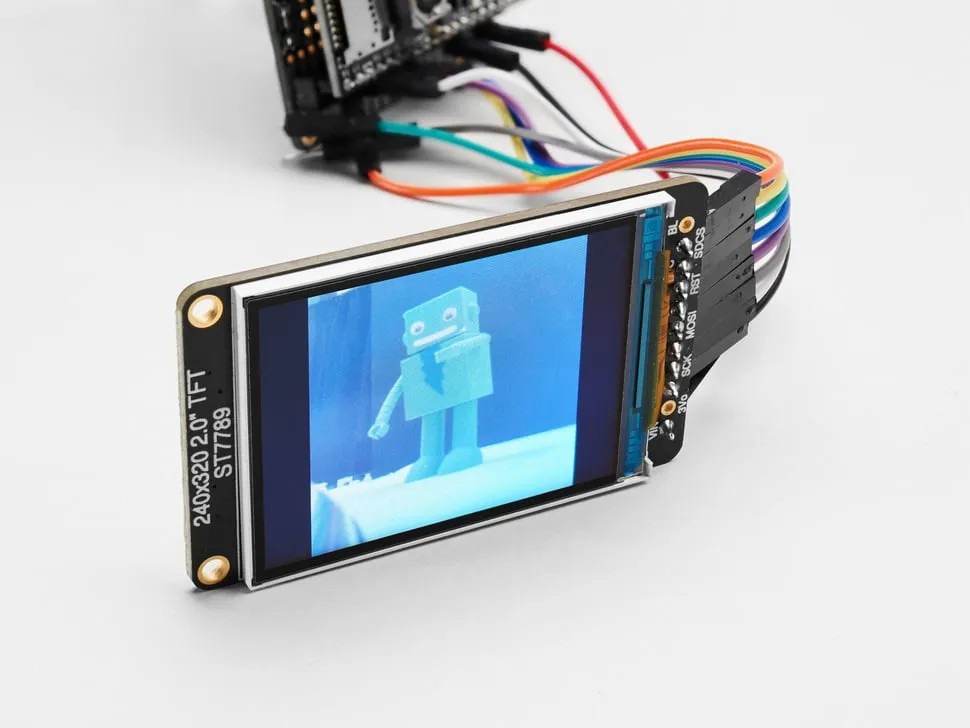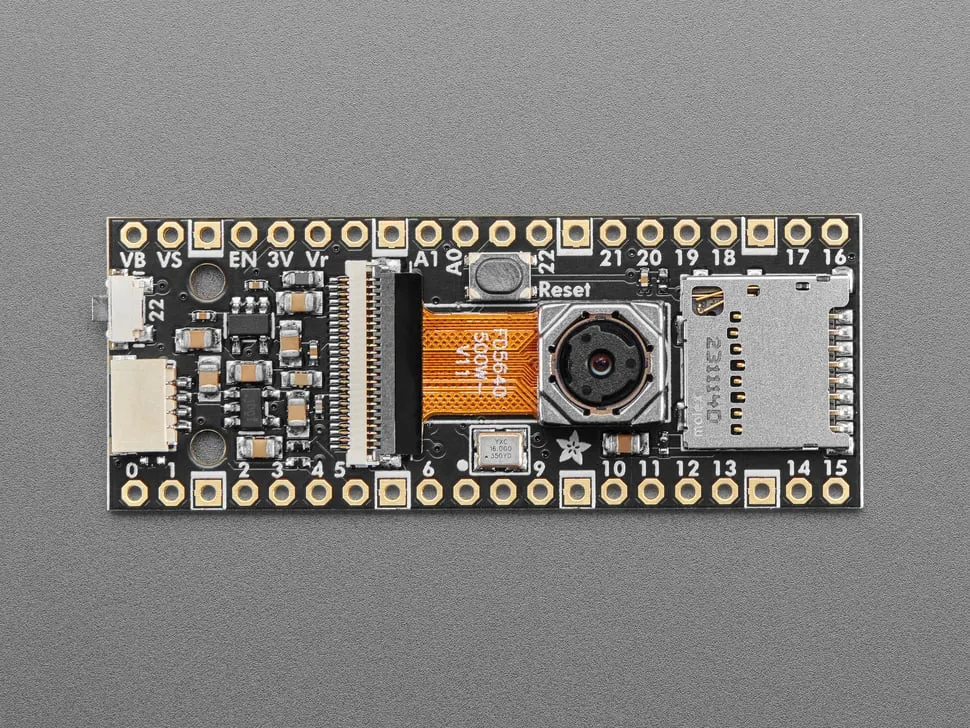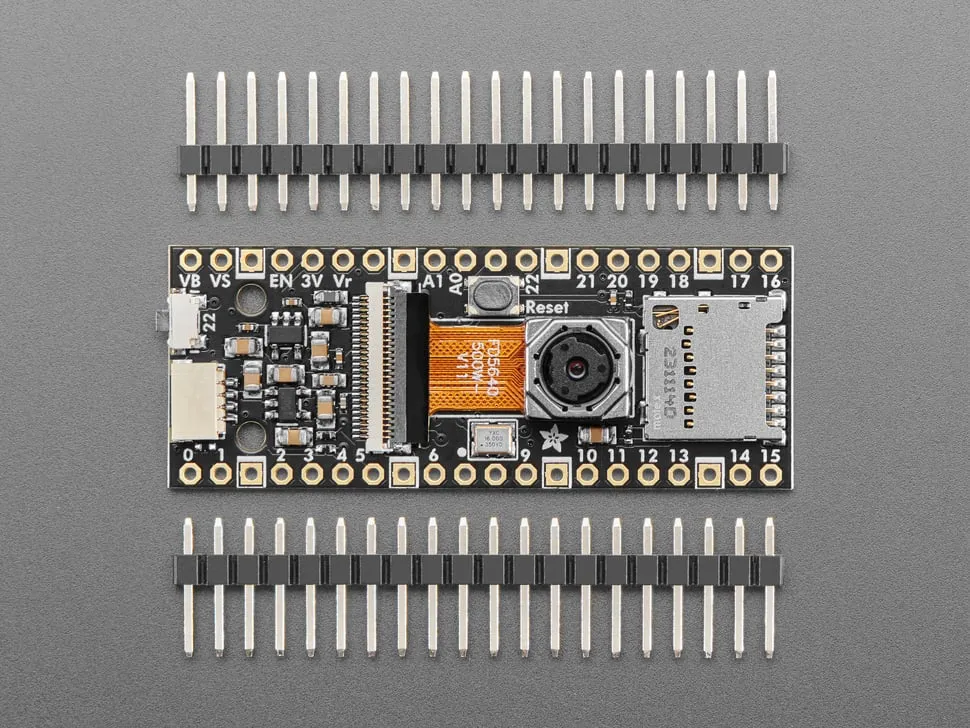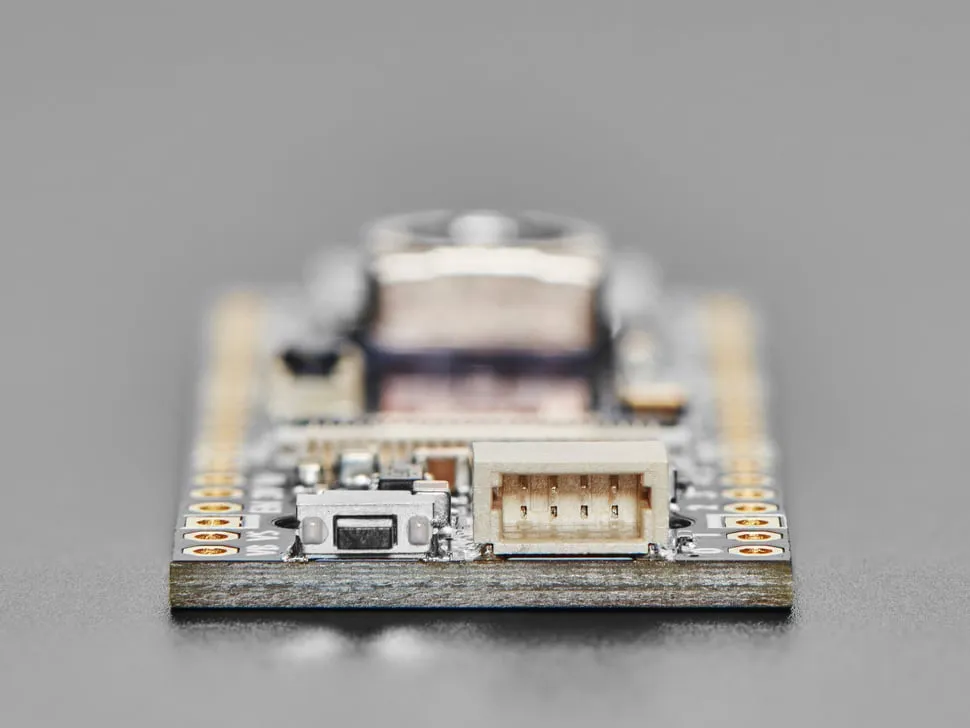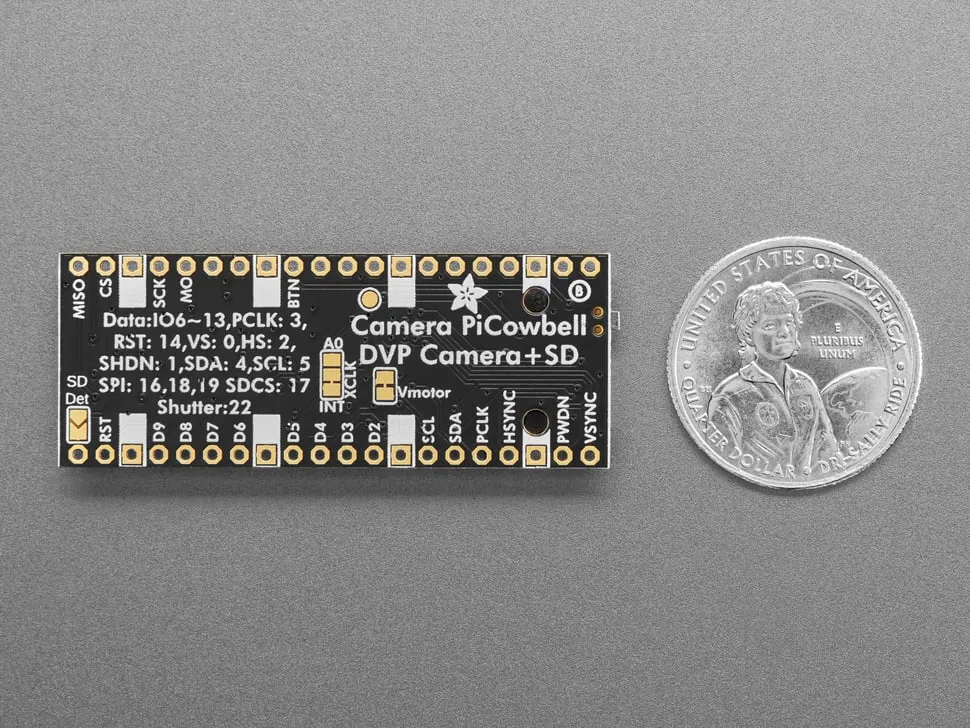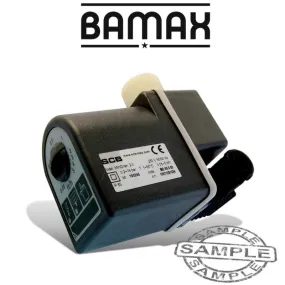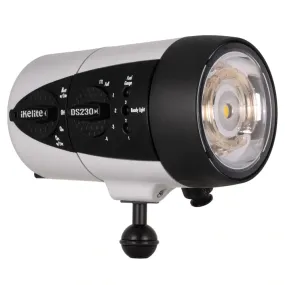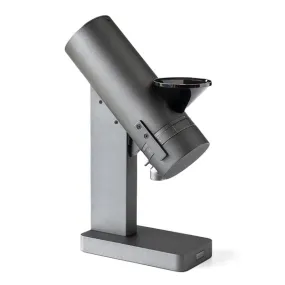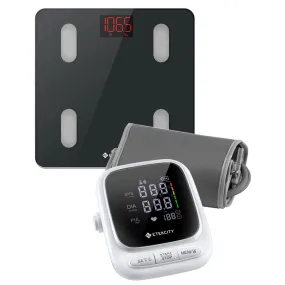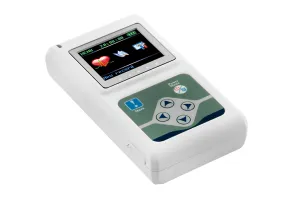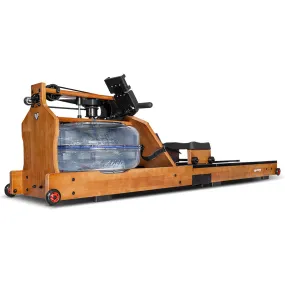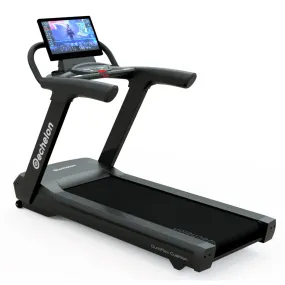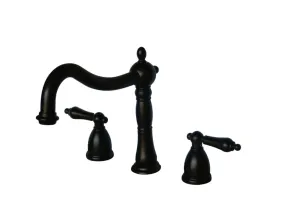The PiCowbell is ringing, alerting you to the availability of the newly stocked Adafruit PiCowbell OV5640 Camera Breakout. This camera features an Autofocus and an impressive 72-degree lens.
Capture high-quality images with the OV5640 camera. Equipped with a 5 Megapixel sensor element, a 72-degree non-distorting lens, and autofocus motor, this camera also includes all necessary support circuitry for easy use with your Pico or Pico W. It allows you to obtain raw RGB images for analysis or use the built-in JPEG encoding to save images to an SD card or upload them to adafruit.io.
The RP2040 microcontroller offers a high-speed PIO interface and sufficient storage for connecting to 'DVP' cameras, with 8 image data pins, Pixel Clock, H Sync and V Sync signals, and an I2C configuration interface. Additionally, it features a Reset and power down pin. Despite using a significant number of GPIO, there are still 6 available for use, even when incorporating an SD card and shutter button.
Camera PiCowbell Features:
-
Interface for OV5640 Camera module
VSync: GPIO 0
Power Down: GPIO 1
HSync: GPIO 2
Pixel Clock: GPIO 3
SDA/SCL: GPIO 4 and GPIO 5
8-bit Digital: GPIO6 through GPIO 13
Reset: GPIO 14
VMotor connected to 3.3V for auto-focus modules -
Micro SD Card:
SPI on GPIO 16, GPIO 18 and GPIO 19
Chip select on GPIO 17
Optional SD Detect on GPIO 15 - Shutter button on GPIO 22
- Reset button
- 16 MHz 'XClock' generated by onboard oscillator
- Stemma QT port for I2C on GPIO 4 / 5
Note that to use the auto-focusing capability, you need to load a new firmware binary over I2C. The autofocus system is controlled with I2C commands to begin an auto-focus procedure and determine that focus is complete. Otherwise, the camera looks just like any other OV5640 sensor.
Each order comes with an assembled PCB, camera sensor, and two pieces of 20-pin pin header. You will need to solder in the header yourself, but it's a quick task.
Since this board has the camera pointing 'up', it's best to use our . Or you can 'stack' the camera 'bell on top, best when you don't need easy access to the BOOT loading button.
Or, for a compact package, you can...
- if you want to be able to plug into a breadboard or other accessory with sockets. Solder these onto the Pico so that the camera is on top.
- if you want to plug directly in and have a nice solid connection that doesn't have any poking-out-bits. Ditto, solder these into the Pico and plug the camera on top.
Technical Details
Product Dimensions: 53.0mm x 20.3mm x 6.8mm / 2.1" x 0.8" x 0.3"
Product Weight: 5.1g / 0.2oz




